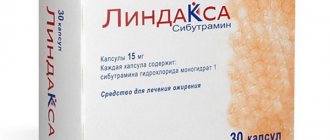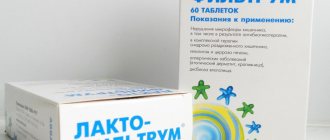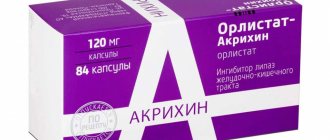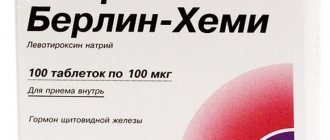Main
Saxenda (liraglutide) is approved by the US Food and Drug Administration (FDA) for use in adolescents (12 years of age and older) as an adjunct to a low-calorie diet and vigorous exercise for weight management. The drug is approved if the weight exceeds 60 kg and the body mass index (BMI) adjusted for the age and sex of adolescents is ≥ 30 kg/m2, which corresponds to obesity in adults.
Previously, Saxenda, introduced by Novo Nordisk in 2014, was approved for use only by adults.
Connecting adolescent patients to Saxenda is an important event. First, over the past 20 years, the prevalence of overweight among children and adolescents has doubled: from 10% to 20%. It has been proven that if both parents have problematic weight, then in 80% of cases the same will be true for the child. In general, excess weight is a global problem: in 2021, there were more than 1.9 billion adults (including over 650 thousand obese) who could use weight loss in one way or another.
Second, orlistat and phentermine are the only drugs approved by the FDA for use in the pediatric population (ages 12 and 16 years, respectively). There are no approved drugs against obesity in children and adolescents in Europe. In addition, bariatric surgery, as the most effective way to remove extra pounds, is only offered to teenagers if they are severely obese.
"Saxenda" (Saxenda, liraglutide).
Advantages and disadvantages
Despite the fact that Saxenda has proven itself to be the best, this medicine requires a responsible attitude. Before you start losing weight with medication, it is better to weigh the pros and cons.
The benefits of using a medicinal product with liraglutide are:
- scientifically proven effectiveness (some manage to lose up to 30 kg per month of therapy);
- absence of unknown components;
- the possibility of getting rid of diseases associated with excess body weight.
The disadvantages are presented in the following list:
- high cost of medication;
- unpleasant side effects;
- an impressive list of contraindications;
- inability to use for “passive” weight loss.
Details
The phase III clinical trial NCT02918279 (randomized, double-blind, placebo-controlled, multicenter, international) examined the safety and effectiveness of weight management among obese adolescent patients (n=251) (12–17 years).
Obesity was defined as a BMI of 30 kg/m2 or more for adults, which, due to heterogeneity, was adjusted according to international criteria for adolescent BMI and at least the 95th percentile of an age- and sex-matched reference value.
Participants were prescribed placebo or liraglutide at a maximum dose of 3.0 mg (the dose was increased gradually to the maximum tolerated dose) by daily subcutaneous injections for 56 weeks. The subjects had to adhere to a course of lifestyle changes.
The primary endpoint was the change in BMI using standard deviation (SDS) scores. The latter, also known as the Z-score, was the number of standard deviations from the population average BMI adjusted for age and sex.
The liraglutide group outperformed the control group in all respects:
The average absolute change in BMI was −1.6 ±3.1 kg/m2 versus +0.1 ±3.4 kg/m2. The average absolute change in body weight came out to −2.7 ±9.1 kg - versus +1.7 ±10.1 kg.
After discontinuation of liraglutide, weight indicators began to increase again, and in the Saxenda group to a greater extent than in the control group: the estimated difference between groups, according to BMI according to SDS, was 0.15 (95% CI: 0.07–0.23 ). However, after 82 weeks, the therapeutic effect still persisted: the average absolute change in BMI was −0.2 ± 3.5 kg/m2 - versus +0.8 ± 4.0 kg/m2, the average absolute change in body weight was + 1.7 ±10.1 kg - versus +4.4 ±11.7 kg.
Among the most common adverse reactions to the use of Saxenda, the frequency of which was higher than in the placebo group: nausea (42% of patients), vomiting (34%), diarrhea (22%), gastroenteritis (13%), dizziness (10 %). Over time, adverse events were observed significantly less frequently.
Operating principle
GLP-1 is a physiological regulator of appetite and food consumption. Its synthetic analogue, liraglutide, has been studied more than once in animals, during which its effect on the hypothalamus was revealed. It was there that the substance strengthened signals of satiety and weakened signals of hunger. In terms of weight loss, liraglutide, and therefore the Saxenda solution itself, acts primarily by reducing adipose tissue, which is possible by reducing the amount of food consumed.
Since the body is not able to distinguish between natural and artificial hormones, a decrease in appetite and normalization of digestive processes when using Saxenda are guaranteed.
Unlike dietary supplements with ingredients that are sometimes unfamiliar to humans and science, medications with liraglutide have proven to be absolutely effective in influencing the weight loss process:
- normalize sugar levels;
- restore the functioning of the pancreas;
- Help the body feel full quickly, while fully absorbing nutrients from food.
The effectiveness of Saxenda is confirmed by statistics: about 80% of users aimed at losing weight actually lost weight when using it. And yet, the drug itself does not work as well as we would like. Experts recommend that those losing weight supplement their therapy with physical activity and a low-calorie diet. Thanks to the use of Saxenda, dietary restriction is painless, which turns weight loss into a process that does not irritate the nervous system.
Reference. Before entering the pharmaceutical market, the drug underwent a number of clinical trials. In 3 of 4 studies, the control group used the drug for 56 weeks, in another - a little more than 2 months. All test participants had a common problem - excess weight. Some of the subjects who used Saxenda achieved greater success in losing weight than patients who took a placebo. In addition to losing weight, scientists noted an improvement in blood glucose and cholesterol levels and stabilization of blood pressure.
Directions for use and dosage Saxenda injection solution 6mg/ml 3ml
Mode of application. Saxenda is intended for subcutaneous administration only. It cannot be administered intravenously or intramuscularly. Saxenda is administered once a day at any time, regardless of food intake. It should be injected into the abdomen, thigh or shoulder area. The location and time of injection can be changed without dose adjustment. However, it is advisable to give injections at approximately the same time of day after choosing the most convenient time. Doses. The initial dose is 0.6 mg per day. The dose is increased to 3 mg per day, adding 0.6 mg at intervals of at least one week to improve gastrointestinal tolerance. If, when increasing the dose, the new dose is not well tolerated by the patient for 2 consecutive weeks, discontinuation of therapy should be considered. The use of the drug in a daily dose of more than 3 mg is not recommended. Therapy with Saxenda should be discontinued if, after 12 weeks of use of the drug at a dose of 3 mg per day, the loss in body weight is less than 5% of the initial value. The need for continued therapy should be reviewed annually. Missed dose. If less than 12 hours have passed since the usual dosing time, the patient should administer the dose as quickly as possible. If less than 12 hours remain before the usual time for the next dose, the patient should not take the missed dose, but should resume dosing with the next scheduled dose. An additional or increased dose should not be given to compensate for a missed dose. Patients with type 2 diabetes mellitus. Saxenda should not be used in combination with other GLP-1 receptor agonists. At the beginning of therapy with Saxenda, it is recommended to reduce the dose of concomitantly used insulin secretagogues (such as sulfonylureas) to reduce the risk of hypoglycemia. Special groups of patients. Elderly patients (over 65 years old). No dose adjustment is required based on age. Experience with the drug in patients over 75 years of age is limited; the drug should be used with caution in such patients. Patients with renal failure. In patients with mild or moderate renal impairment (creatinine clearance > 30 ml/min), no dose adjustment is required. There is limited experience with the use of Saxenda in patients with severe renal impairment (creatinine clearance <30 ml/min). The use of Saxenda in such patients, including patients with end-stage renal disease, is contraindicated. Patients with impaired liver function. In patients with mild or moderate liver dysfunction, no dose adjustment is required. In patients with mild or moderate liver dysfunction, the drug should be used with caution. The use of Saxenda in patients with severe liver dysfunction is contraindicated. Children. The use of Saxenda in children and adolescents under 18 years of age is contraindicated due to the lack of data on safety and effectiveness. Instructions for patients on the use of Saxenda® solution for subcutaneous administration 6 mg/ml in a pre-filled syringe pen. Please read these instructions carefully before using the pre-filled pen with Saxenda®. Use a pen only after the patient has learned how to use it under the guidance of a doctor or nurse. Check the label on your pen to make sure it contains Saxenda 6 mg/mL, and then carefully look at the illustrations below for details of the pen and needle. If the patient is visually impaired or has severe vision problems and cannot distinguish the numbers on the dose counter, do not use the pen without assistance. A person without visual impairment who has been trained in the proper use of the Saxenda® pre-filled pen can help. The pre-filled pen contains 18 mg of liraglutide and allows for dose selection of 0.6 mg, 1.2 mg, 1.8 mg, 2.4 mg and 3.0 mg. The Saxenda® syringe pen is designed for use with NovoFine® or NovoTwist® disposable needles up to 8 mm in length. Needles are not included in the package. Important information. Pay attention to the information marked as important, this is necessary for the safe use of the pen. Preparing a syringe pen with a needle for use. Check the name and color code on the pen label to make sure it contains Saxenda®. This is especially important if the patient is using different injectable drugs. Using the wrong drug can be harmful to his health. Remove the cap from the syringe pen. Make sure that the solution in the syringe pen is transparent and colorless. Look at the remainder scale window. If the drug is cloudy, the pen syringe cannot be used. Take a new disposable needle and remove the protective sticker. Place the needle on the pen and turn it so that the needle fits tightly onto the pen. Remove the outer needle cap, but do not throw it away. You will need it after the injection is complete to safely remove the needle. Remove and discard the inner needle cap. If the patient tries to put the inner cap back on the needle, they may stick themselves. A drop of solution may appear at the end of the needle. This is normal, however, the patient should still check the supply of the drug if using a new pen for the first time. A new needle should not be attached until the patient is ready to inject. Important information. Always use a new needle for each injection to avoid needle blockage, contamination, infection, and injecting the wrong dose of medication. Never use a needle if it is bent or damaged. Checking the receipt of the drug. Before the first injection, use a new syringe pen to check the supply of the drug. If the syringe pen is already in use, then proceed to the “Setting the dose” operation. Turn the dose selector until the drug delivery check symbol (vvw) is aligned with the dose indicator in the indicator window. Hold the pen with the needle pointing up. Press the start button and hold it in this position until the dose counter returns to zero. “0” should be opposite the dose indicator. A drop of solution should appear at the end of the needle. There may be a small drop left at the end of the needle, but it will not be injected. If a drop of solution does not appear at the end of the needle, it is necessary to repeat the “Checking the receipt of the drug” operation, but no more than 6 times. If a drop of solution does not appear, you should change the needle and repeat this operation. If a drop of Saxenda® solution does not appear, you should discard the syringe pen and use a new one. Important information. Before using a new syringe pen for the first time, you need to make sure that a drop of solution appears at the end of the needle. This ensures the supply of the drug. If a drop of solution does not appear, the drug will not be administered, even if the dosage counter moves. This may indicate that the needle is blocked or damaged. If the patient does not check the supply of the drug before the first injection using a new pen, he may not administer the required dose and the expected effect of Saxenda® will not be achieved. Setting the dose. Turn the dose selector to select the patient's required dose (0.6 mg, 1.2 mg, 1.8 mg, 2.4 mg or 3 mg. If the dose has not been set correctly, turn the dose selector forward or backward until it is set correct dose. The maximum dose that can be set is 3 mg. The dose selector allows you to change the dose. Only the dose counter and dose indicator will indicate the number of mg of drug in the dose selected by the patient. The patient can draw up to 3 mg of drug per dose. If the syringe used is pen contains less than 3 mg, the dose counter will stop before 3 appears in the window. Each time you turn the dose selector, clicks are heard, the sound of the clicks depends on which direction the dose selector is rotated (forward, backward, or if the dialed dose exceeds the number of mg of the drug , remaining in the pen). These clicks should not be counted. Important information: Before each injection, check how much of the drug the patient has taken using the counter and dose indicator. Do not count the clicks of the pen. The residue scale shows the approximate amount of solution remaining in the syringe pen, so it cannot be used to measure the dose of the drug. Do not try to choose doses other than doses 0.6; 1.2; 1.8; 2.4 or 3 mg. The numbers in the indicator window should be exactly opposite the dosage indicator, this position ensures that the patient receives the correct dose of the drug. How much drug is left? The residue scale shows the approximate amount of the drug remaining in the syringe pen. To accurately determine how much drug is left, use a dose counter. Turn the dose selector until the dose counter stops. If it shows “3”, there is at least 3 mg of the drug left in the pen. If the dose counter shows less than “3,” this means that there is not enough drug left in the pen to administer the full 3 mg dose. If you need to inject more of the drug than is left in the pen, only if the patient has been trained by a doctor or nurse, he or she can divide the dose of the drug between two pens. Use the calculator to plan doses as recommended by your doctor or nurse. Important information. You need to be very careful to calculate the dose correctly. If you are not sure how to properly divide the dose when using two pens, you should set and administer the full dose using a new pen. Administration of the drug. Insert the needle under the skin using the injection technique recommended by your doctor or nurse. Make sure the dose counter is within the patient's field of vision. Do not touch the dose counter with your fingers, as this may interrupt the injection. Press the start button all the way and hold it in this position until the dose counter shows “0”. “0” should be exactly opposite the dose indicator. The patient may hear or feel a clicking sound. Hold the needle under the skin after the dose counter has returned to zero and slowly count to 6. If the patient removes the needle from under the skin early, he will see the drug flow out of the needle. In this case, an incomplete dose of the drug will be administered. Remove the needle from under the skin. If blood appears at the injection site, lightly press a cotton swab onto the injection site. Do not massage the injection site. After the injection is completed, you can see a drop of solution at the end of the needle. This is normal and does not affect the dose of the drug that was administered. Important information. Always check the dose counter to ensure you know how much Saxenda® has been administered. Hold the start button until the dose counter shows “0”. How to identify a blocked or damaged needle? If the dose counter does not show “0” after pressing the trigger button for a long time, the needle may be clogged or damaged. This means that the patient did not receive the drug even if the dose counter changed position from the original dose that the patient set. What to do with a clogged needle? Remove the needle “After completing the injection” and repeat all steps starting from operation I “Preparing the syringe pen and new needle”. Make sure that the dose required by the patient is established. Never touch the dose counter while administering the drug. This may interrupt the injection. After completing the injection. Place the outer needle cap on a flat surface and insert the tip of the needle into the cap without touching it or the needle. When the needle enters the cap, carefully place the cap on the needle. Unscrew the needle and throw it away, taking precautions as directed by your doctor or nurse. After each injection, put a cap on the syringe pen to protect the solution contained in it from exposure to light. You should always discard the needle after each injection to ensure a comfortable injection and avoid needles becoming clogged. If the needle becomes blocked, the patient will not be able to inject the drug. Discard the empty pen with the needle removed as directed by your doctor, nurse, pharmacist, or local regulations. Important information. To avoid accidental needle sticks, never attempt to put the inner cap back on the needle. Always remove the needle from the pen after each injection. This will avoid needle blockage, contamination, infection, leakage of solution, and administration of the wrong dose of the drug. Keep the syringe pen and needles out of the reach of everyone, and especially children. Never share your syringe pen with the drug and its needles with others. Caregivers should handle used needles with extreme care to avoid accidental sticks and cross-infection. Syringe pen care. Do not leave your pen in a car or any other place where it may be exposed to extremely hot or cold temperatures. Do not use Saxenda® if it has been frozen. In this case, the expected effect of using the drug will not be achieved. Protect the syringe pen from dust, dirt and all types of liquids. Do not wash the pen, immerse it in liquid or lubricate it. If necessary, the pen can be cleaned with a damp cloth and a mild detergent. Do not drop or hit the pen on a hard surface. If the patient drops the syringe pen or doubts its serviceability, a new needle should be attached and the flow of the drug should be checked before injecting. Refilling the syringe pen is not allowed. An empty syringe pen should be thrown away immediately. Do not try to repair the syringe pen yourself or take it apart.
Analogs
Substitutes for the drug "Saxenda" are used for the same diseases, in other dosages. All generics also contain glucagon-like peptide-1 agonists, with subcutaneous administration of the drug, with the same mechanism of action and with similar prices and side symptoms.
The table below shows the main substitutes with the same clinical effects and indications.
Important! Despite the similar descriptions of the drugs, only each patient's attending physician can determine which medication to prescribe.
| Drug name | Main component | Daily dose | Price in rubles |
| Trulicity | Dulaglutide | 1.5 mg once a week | 11000-11500 |
| Victoza | Liraglutide | 0.6 mg/day | 9500-10000 |











